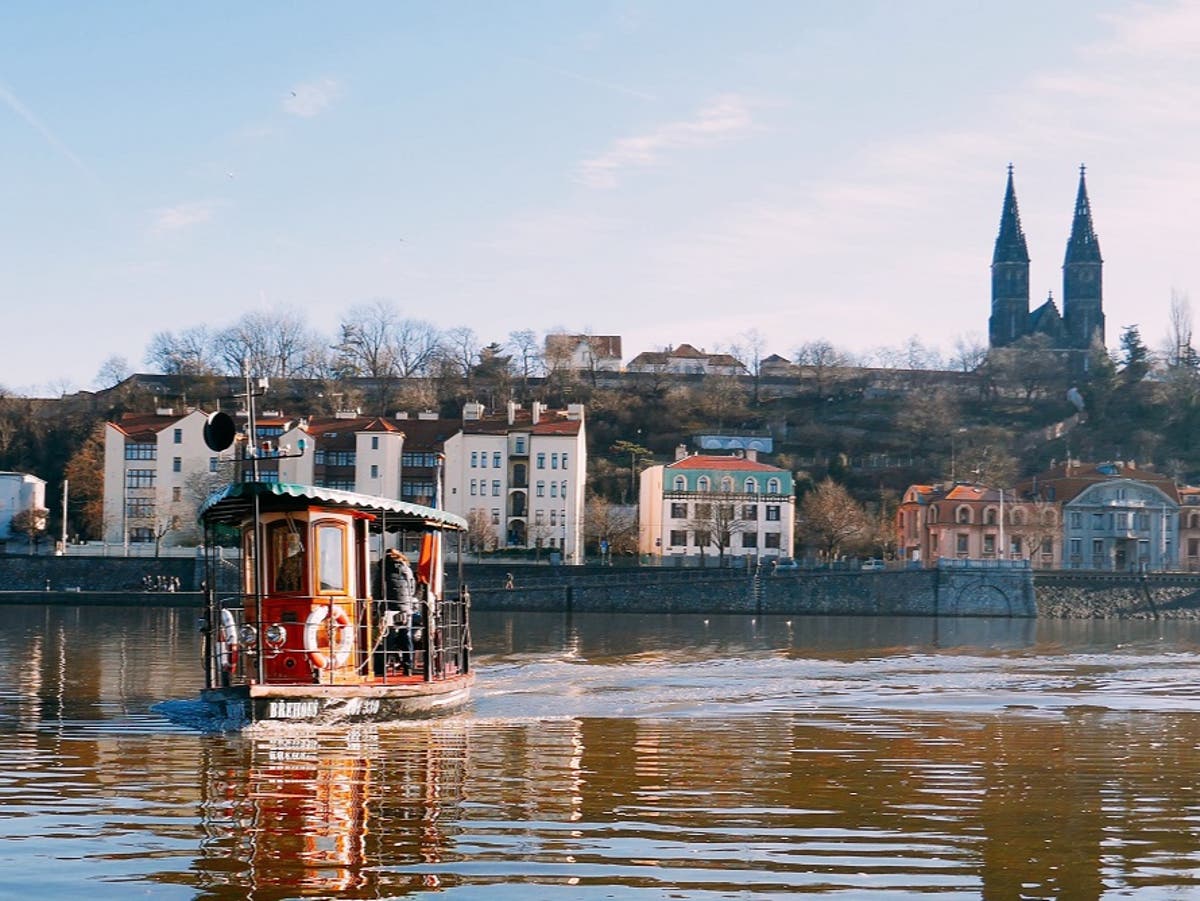
Plans are afoot to launch a new sleeper train service from Brussels to Prague later this year, giving an extra option for travellers keen to visit the Czech capital but keep their carbon footprint light. But what about when you arrive? Prague’s timeworn streets may be chock-full of beautiful buildings and vistas, but they’ve also acquired a reputation for throngs of tour groups, stag parties and stalls selling mass-produced tat.
The pandemic encouraged a reset, though, with many city residents and politicians now keen for Prague to turn away from its past excesses and opt for a new sustainable future. And thanks to more businesses finding ways to lower their environmental impact and the city’s already excellent public transport system – plus swathes of grassy space – Prague can make for a surprisingly green minibreak.
In a country best known for its hearty meat-based cuisine, visiting vegetarians once had to rely almost entirely on plates of smažený sýr (fried cheese). Vegans, on the other hand, would need to pack a picnic. But times have changed, and Prague now has a glut of restaurants serving up plant-based dishes. Social enterprises Bistro Střecha and Jídelna Kuchařek bez domova employ homeless workers and have short daily menus that focus on generous vegan plates. For meat-free burgers and unbeatable castle views, seek out a table on the terrace of Vegan’s Prague.
Come Saturday morning, the farmer’s market on the Náplavka embankment offers a chance to rouse your senses and reduce your food miles with its abundant local produce and street food. From here, walk the five minutes to LAbspace, a minimalist café-slash-bar that spills out onto the embankment from a renovated ice vault. It isn’t just the interiors that are pared back here; waste and packaging are reduced by composting coffee residue and concocting fragrant soft drinks using seasonal herbs, fruits and flowers.
On the other side of the Vltava (and a quick jaunt from Náplavka via public ferry) is Manifesto Anděl. Drawing a young, eco-conscious crowd, this cashless food market serves up international plates, including veggie ramen and loaded cactus tacos, all on porcelain dishes and without a plastic fork in sight. The kitchens also use veg grown onsite, and clever number-crunching to predict footfall keeps food waste down.
Prague has a small but growing number of hotels with eco-credentials. One of the first and best is Mosaic House Design Hotel in the New Town: an early adopter of integrating greywater and heat capture systems to produce its own power. In fact, repurposing is second nature here, with leftovers from the high-ceilinged café turned into compost for the courtyard garden and living roof. The stylish doubles on the upper floors also come with outdoor space, with large-scale mushroom sculptures by Czech artist Michal Trpák sprouting out from the planted terraces and providing a whimsical oasis from which to ogle the city’s fairytale spires.
For those seeking a more secluded sanctuary, Hotel Adalbert sits in a 17th-century convent within the leafy grounds of the 1,000-year-old Břevnov Monastery. A 15-minute tram ride to the Old Town, and handy for the nature reserve of Divoká Šárka and the mature parkland of Obora Hvězda, the hotel is committed to energy saving, waste reduction and planet-friendly products. Its snug onsite tavern restaurant serves up lagers and IPAs crafted at the monastery’s brewery alongside dangerously quaffable Czech wines.
Stroll north of spacious Letná Park to the bohemian district beyond and find a raft of independent boutiques selling products by Czech designers and artists. Behind its functionalist façade on Milady Horákové, Nila has created a lovely retreat filled with ethical fashion and homewares. Then across the street is Paperlote: a store selling covetable, handcrafted stationery made from sustainable materials.
Vintage fans will also get a kick out of stalking through Letná’s second-hand clothes shops, with Aristokrat Vintage and Malé černé particularly worthy of a snoop. Afterwards, lunch at plant-based bistro Forky’s, or ride a tram back across the river for seasonal Asian dishes using local produce and high-welfare meat at Sansho.
Eco attractions
With an impressive 56 per cent of Prague covered by trees or grass, it would seem churlish not to spend at least some time basking in its greenery. Forage for fresh fruit, using the map on the Na ovoce website to point you in the right direction. Alternatively, spend a day wandering the tree-lined paths of Prague’s biggest and most handsome park, Stromovka.
With an impressive 56 per cent of Prague covered by trees or grass, it would seem churlish not to spend at least some time basking in its greenery
Historic tram line 41 operates from outside the park’s planetarium during weekends and holidays, touring you through the city in retro style. Stay on board until the final stop and pay homage to the affordable and integrated system at the Museum of Public Transport.
Although the knotted lanes in the centre are fun to explore on foot, Prague also has a network of cycle paths and places offering bike rental and tours. Among them is Praha Bike, whose knowledgeable guides will show you the best route to Vyšehrad: a 10th-century fort that is arguably just as beautiful as Prague’s other more famous and visited castle.
Travel Essentials
Getting there
Until the new Brussels-Prague sleeper service launches in summer 2022, the most time-efficient rail route from London via Paris and Zurich, transferring onto the Czech Railways sleeper service from there.
Staying there
Mosaic House Design Hotel has doubles from £85, B&B; Adalbert Hotel has doubles from £57, B&B, and two-bed apartments from £75, B&B.